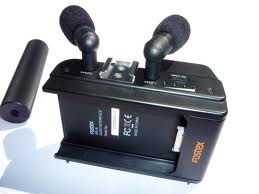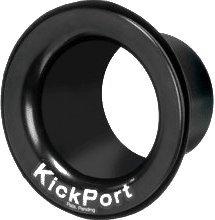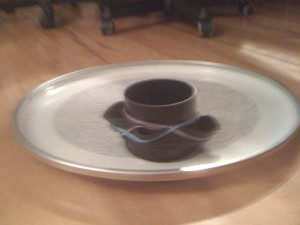I recently purchased the Fostex AR-4i audio interface for my iPhone 4s. Even though it came out a few years ago it still had the best reviews for a recording interface in it’s price range. I wanted something under $100 that’s really quick to set up and portable so I can take iPhone video recordings of myself and my drum students.
Basically, it’s a mini-interface that attaches to the iPhone 4 or 4s. (They make a similar model for iPhone 5-see link below.) The interface is also an iPhone doc connecter with built-in AD/DA converters and three 1/8″ mic jacks (only two can be used simultaneously for either horizontal or vertical orientation). It also has some nice features including:
- LED level meter (with three green and one red, for clipping)
- Input level control
- An external headphone jack
It also comes with a nifty grip handle, but since I already own a mini tripod stand I don’t have a use for it. There is a free app you can download from the app store which gives you the ability to set some recording parameters including input mode (mono or stereo), low cut filter, limiter, and clipping reducer. Once I started recording the drums, it took me a good amount of time to find the correct input level where the drums were not distorting. Although, to be honest, my drum space is currently much too acoustically live sounding to get any decent recording.
Anyway, without further ado here is the clip of playing with the built-in iPhone mic:
Here is the take with the Fostex AR-4i:
If you listen to the clips with a pair of decent headphones you can hear that the AR-4i mic captures more low-end and slightly less white noise than the built-in iPhone mic. Also, the cymbals sound more like cymbals with the AR-4i, as the mic captures more of their tonal characteristics. Overall, I’m quite pleased with the results; however, I do prefer the compressed snare sound with the iPhone mic over the the cleaner snare sound of the AR-4i. Amazon had the best price when I bought it. You can purchase it from Amazon here: Fostex AR-4i Audio Interface for iPhone 4/4S/iPod Touch 4G, Battery Powered
If you have an iPhone 5 you can get a similar model here: Fostex AR101 USB Powered Audio Interface for iPhone 4/4S/5, DSLR Camera, and PC


 I needed to add some low end to my 20 inch kick drum so I decided to give the
I needed to add some low end to my 20 inch kick drum so I decided to give the 


